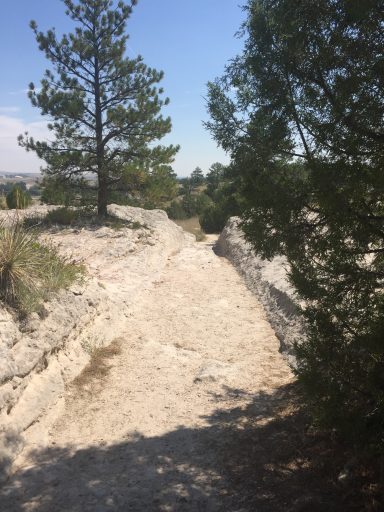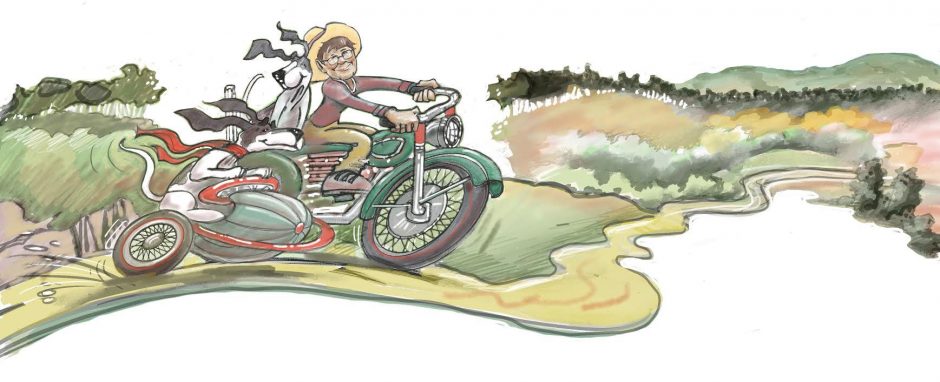IN THEIR FOOTPRINTS

Organ Trail Tracks Near Guernsey, Wyoming
My latest book, HALLEY, awarded 2015 Jefferson Cup Honor for Historical Fiction, awarded the Moonbeam Silver Medal for Young Adult Fiction, and awarded the 2016 Frank Yerby Award for Fiction. Available at: NewSouth Books: www.newsouthbooks.com/halley and Amazon
One of the highlights of our recent trip out West was a visit to several locations where the ruts worn into the landscape by the pioneers who traveled the Oregon Trail in the 1800s are still plainly visible. In Guernsey, Wyoming, the actual ground is worn down as much as two feet. Back then, there were no highways in the West, of course, not even roads. The road was created by wagon wheels, horse or oxen traffic, and human feet—frequently bare.
Other than the powerful testament to the hardship of the journey, the ruts present visitors with the truth of how sparely these pioneers traveled. The wheels that made that road were only about three or four feet apart. How narrow were those wagons that carried all the necessities for a family’s journey—and whatever was essential to begin their new life! Rarely did the pioneers ride. Unless sick or crippled or very, very young, they walked—day after day, after day, after day. The wagon was too cram packed with tools, potatoes, dried beans, and essential clothing to allow for passengers. Nor would it have been a comfortable ride. A jolting, and often tilting, wagon could hardly have been pleasant. In one case, the family sow was allowed to ride with her just born piglets, because the importance of future meat. Piglets were too young to trot the fifteen or so miles the wagon could cover in a day. All in vain! The ride was so rough that they died anyway. I assume the sow had to resume trotting as soon as she was deemed able to keep up.
Most of the children and some of the adults were barefoot. Even if they had shoes at the beginning of the trip, they soon wore out. Clothes became filthy and shredded. Of course, the wagons stopped sometimes long enough to do washing, but only when they had to. Time was of the essence. Their food supplies wouldn’t last forever and neither would warm, traveling weather. They had to get to the final destination as soon as possible.
As the wagon became increasingly rickety and the horses more thin and exhausted, families frequently had to lighten the load. Books, furniture, even bedding were frequently set out on the ground and abandoned to the elements.
When I looked at those tracks and the hilly country all around, I knew those people were tougher than me. And the women had it harder than the men. Most of them had young children to take care of. That can be a big job for even a modern day mother. Imagine doing it while traveling with a wagon train! Some women gave birth during the trip. Even in the comfort of home and with the benefit of a doctor in attendance, giving birth back in the 1800s could be a life and death matter. Some of those new mothers died and many of the babies did not make it. There was no choice but to bury the dead along the trail and keep going. One woman with five children wove cloth the year before they started west, and made burial shrouds for every member of her family, just in case. Fortunately, they all survived the journey. Some families were not so lucky. If too many of the adults died and no other travelers took mercy on the orphaned children, whole families could be doomed.
Traveling West way back then was an adventure, and those who lived through it, and successfully made new starts looked back on the journey as the high point in their lives.
My hat is off to them.
This entry was posted in
Uncategorized. Bookmark the
permalink.

